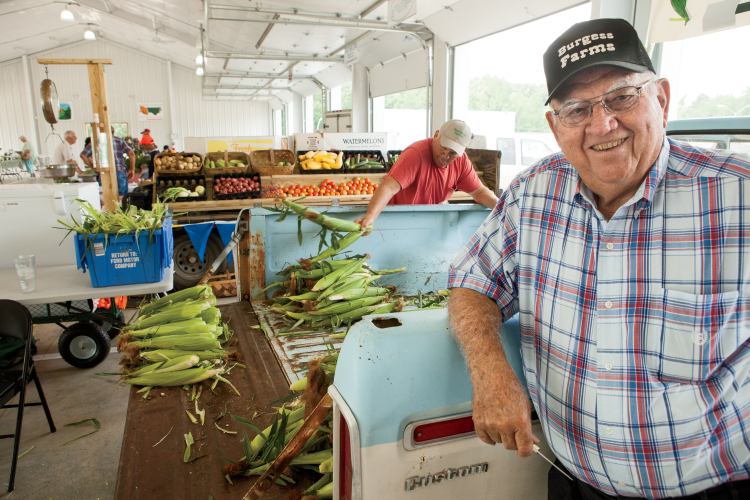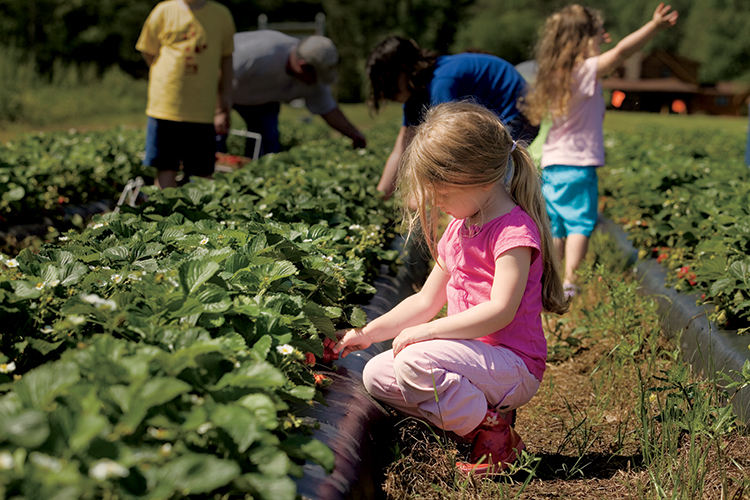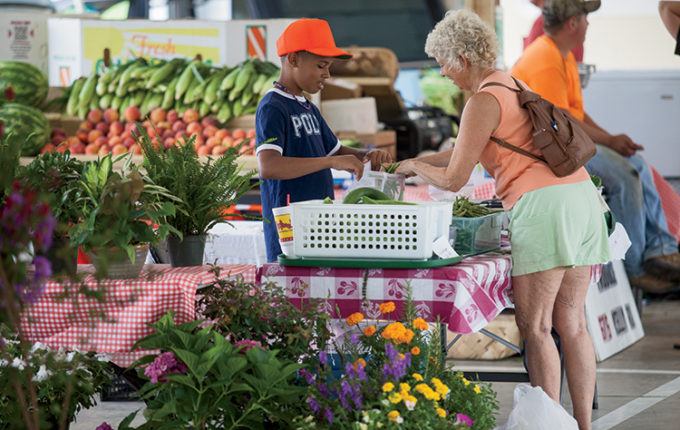Last week, we talked about the benefits to consumers of buying farm products locally at farmers markets and roadside stands. Today, we’re going to discuss a couple of ways farmers can benefit from selling farm products locally.
The first reason is pretty simple—selling locally can increase revenue. It’s no secret that consumers are making more of an effort to buy local food, and farmers have responded to that increased demand with CSAs (community-supported agriculture) and ‘pick-your-own’ sites. Communities across the state have responded by opening local farmers markets at one of the highest rates in the country, and the state currently has the tenth most farmers markets nationally, according to the US Department of Agriculture (USDA). The number of farms selling directly to consumers has risen from 2,499 in 1997 to 4,475 in 2012, a 79% increase. North Carolina also ranks third nationally in the number of farms (579) selling through a CSA arrangement, an increase of about 40% since 2007. So does any of this make a difference in the bottom line? From 1997 to 2012, revenue from direct sales has increased from about $12 million to nearly $32 million, an increase of about 161%. (The stats above can be found in USDA’s Census of Agriculture here and here.)
 Direct sales opportunities also help new farmers and those farming smaller plots that don’t have the capacity to sell to large distributors or grocery store chains by providing them access to good markets. Pete Burgess, a farmer from Henderson who was a key figure in opening the Vance County Regional Farmers Market back in 2014, said, “it gives [smaller farmers] a place they can depend on. One of the things we’ve been really surprised at is [the number of] young farmers. We’ve had vendors who were about 15 years old. They had their own produce stand. They grew their own stuff. And they probably did better than anybody we had.”
Direct sales opportunities also help new farmers and those farming smaller plots that don’t have the capacity to sell to large distributors or grocery store chains by providing them access to good markets. Pete Burgess, a farmer from Henderson who was a key figure in opening the Vance County Regional Farmers Market back in 2014, said, “it gives [smaller farmers] a place they can depend on. One of the things we’ve been really surprised at is [the number of] young farmers. We’ve had vendors who were about 15 years old. They had their own produce stand. They grew their own stuff. And they probably did better than anybody we had.”
As an added benefit of consumers’ interest in local food, some farmers are selling locally to chefs, restaurants, grocery stores, and schools that are looking to serve locally-sourced food. Most people have probably noticed the growth of local foods featured on restaurant menus, but many grocery stores like Lowes Foods and Harris Teeter have made it a priority to carry local food in their stores. In 2012, North Carolina ranked fifth nationally for the number of farms selling their products directly to retail outlets (2,201). Associate Professor of Hospitality Management/Finance at Penn State University Dr. Amit Sharma has done quite a bit of research into the purchasing behaviors of the food service industry and restaurant-goers. In a 2012 article discussing one such study, he said that “40% or more of people will pay a premium for identified local ingredients,” suggesting that farmers could actually make a little more money by selling to retailers who are willing to pay (and charge customers) a slightly higher price for the product. He went on to mention that “farmers may find that their margins may be higher when they sell locally [because] they are cutting out the middleman.”
~~~
The second reason farmers sell locally is the connection to the community and the consumer. Tracy Madigan, manager of the Vance County Regional Farmers Market said, “The customers really enjoy learning. And the farmers really enjoy talking about their methods and practices, where this particular tomato came from and whether it’s an heirloom or a Big Boy.” Royston Brown, owner of Orelly’s Curry Q Sauce Co. in Oxford, is a vendor at the Vance County market. He said being at the farmers market is “a very good way of having a face-to-face conversation with a customer. It helps the business by word-of-mouth, but the customer who comes in and tries [samples]. They will tell their friends and neighbors, and that helps promote the business. It’s a very good advertisement being at the farmers market.”
Shawn and Tracey Harding of Southside Farms in Chocowinity dedicate three of their 600 acres to a pick-your-own strawberry site. “Strawberries are an intense crop,” Shawn said. “Three doesn’t sound like a lot. But it is a lot of strawberries. There are 14,000 strawberry plants per acre.” Shawn added “Generally, about 50% of our sales are people picking their own and 50% are ones that we call ‘We Pick.’”
 Tracey continued, “People want to get their food closer to home where they know where it was grown.” Shawn added, “There’s a trust factor that comes in. As in ‘I actually know the person who grew this, and I know where it came from.’ That’s especially true if you pick your own. You can’t get any closer than that.”
Tracey continued, “People want to get their food closer to home where they know where it was grown.” Shawn added, “There’s a trust factor that comes in. As in ‘I actually know the person who grew this, and I know where it came from.’ That’s especially true if you pick your own. You can’t get any closer than that.”
But despite the craziness that sometimes accompanies selling local, the Hardings still think it’s worth it. “It’s just something we enjoy doing,” says Tracey. “We’re fortunate we’ve been able to make a living out of it.”
The stories above first appeared in NCFB’s magazine, North Carolina Field and Family, in the Spring 2015 issue. To read more about the Vance County Regional Farmers Market, Shawn and Tracey Harding’s ‘pick-your-own’ strawberry patch, and more great stories about North Carolina agriculture, visit www.ncfieldfamily.org.

